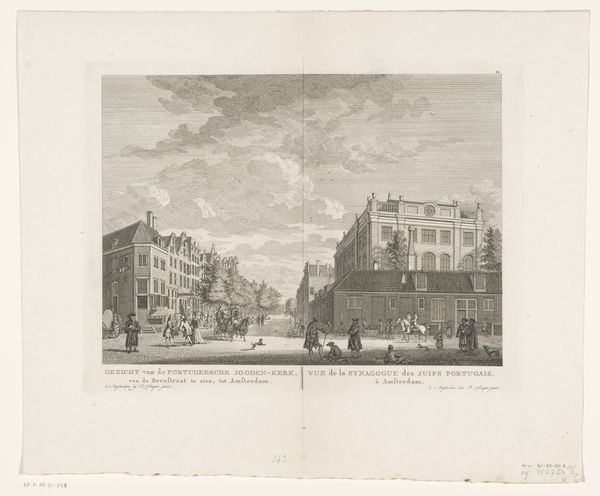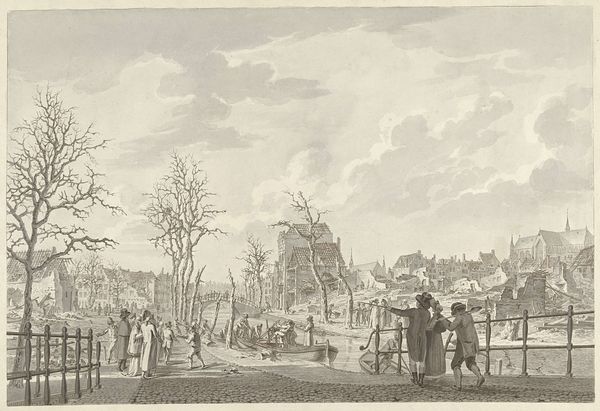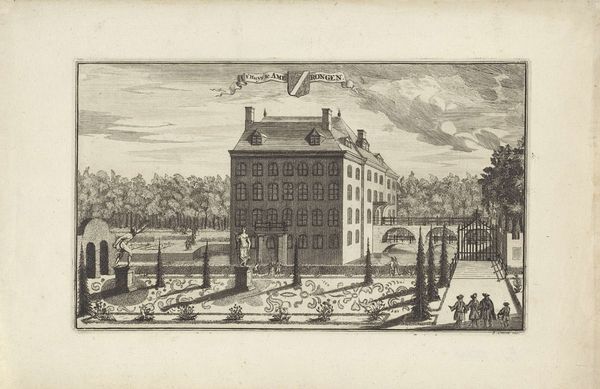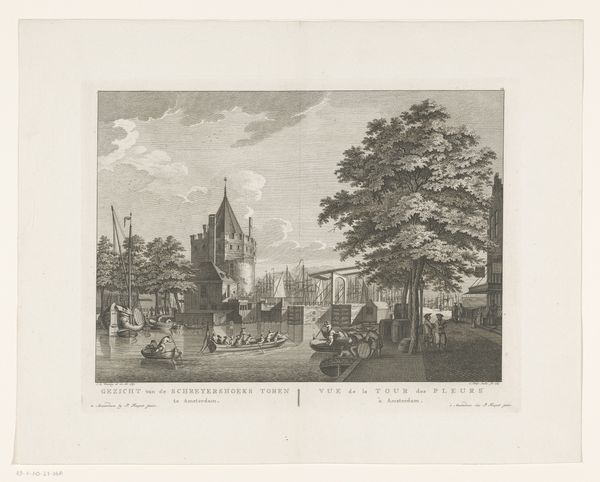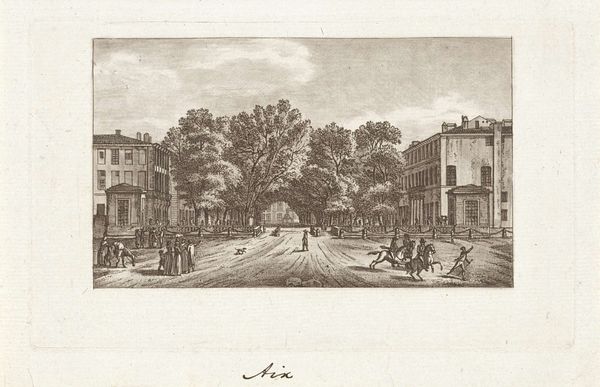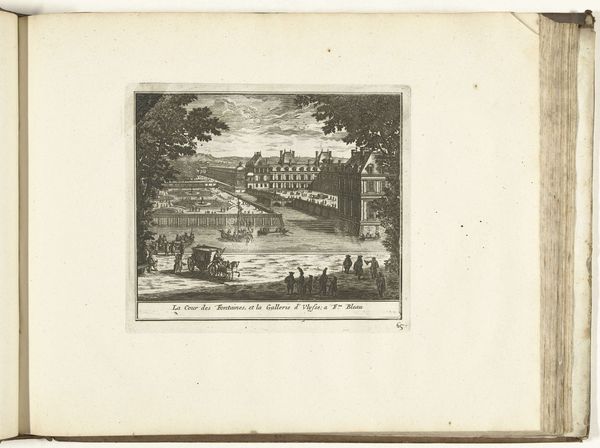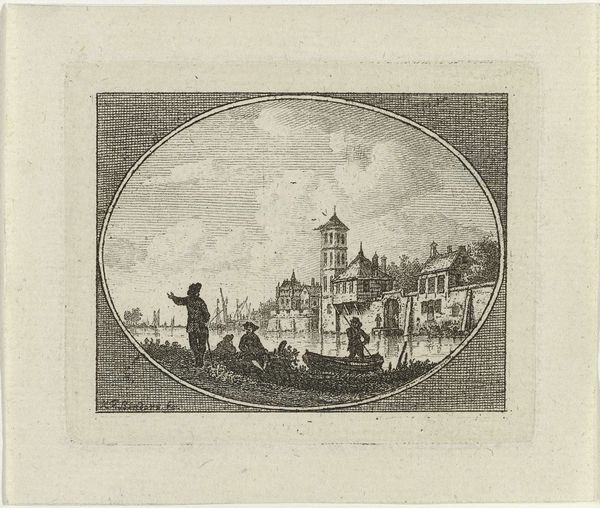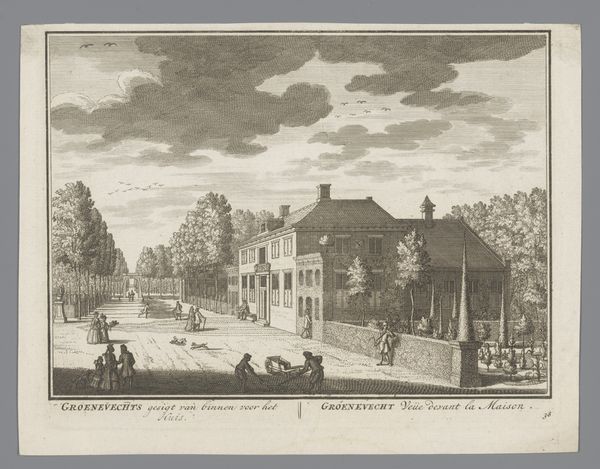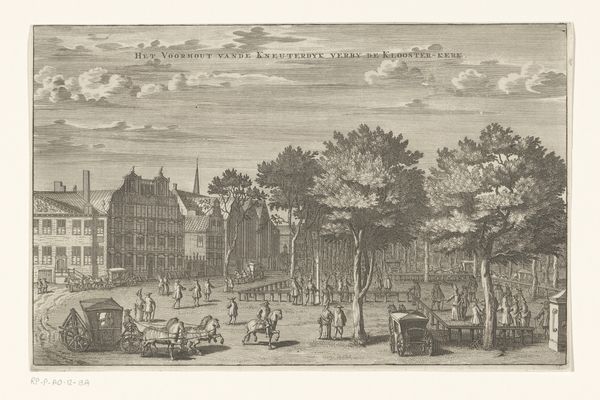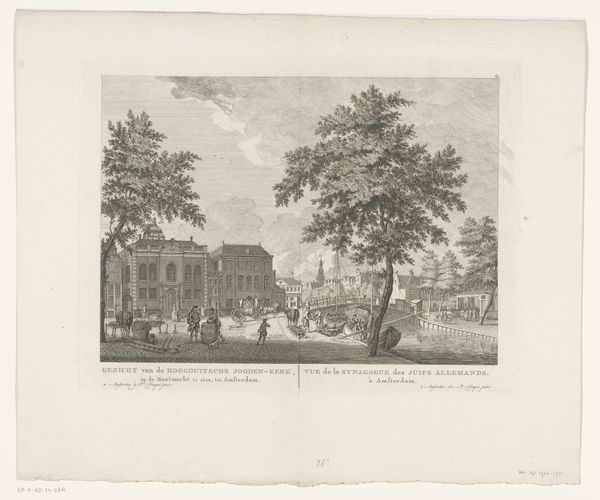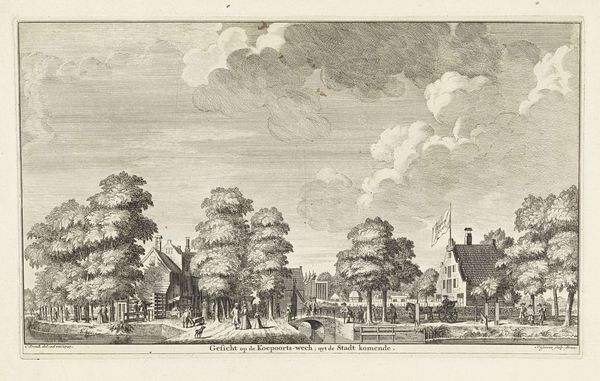
Gezicht op de Haarlemmerpoort te Amsterdam, 1765 (1837) 1765 - 1783
0:00
0:00
Dimensions: height 283 mm, width 371 mm
Copyright: Rijks Museum: Open Domain
Editor: This is "Gezicht op de Haarlemmerpoort te Amsterdam," or "View of the Haarlemmerpoort in Amsterdam," made between 1765 and 1783 by Caspar Jacobsz. Philips. It's an engraving, which I think adds to its formal, almost documentary feel. It’s striking how the artist captures this very specific time and place in Amsterdam. What do you make of it? Curator: The "Haarlemmerpoort" wasn't just a gate; it was a social space, a site of commerce and public life meticulously represented here. Philips' print becomes a crucial document of Amsterdam's urban development and burgeoning civic identity. Editor: So, more than just a pretty picture? Curator: Precisely. Consider the engraving's dissemination: Prints like these were often commissioned and sold to a growing middle class eager to consume images of their city. They helped to shape a collective understanding of Amsterdam's identity and its place in the world. Look at the details: What kinds of activities do you observe, and what can those details tell us? Editor: I see people chatting, doing business, kids playing…It feels like a slice of everyday life made important. Did the placement of this image, say in a home or shop, also play a role? Curator: Absolutely. It was a conversation starter. A claim to urban belonging. Furthermore, think about the act of printing and its wider availability; such detailed prints were also circulated amongst intellectuals, sparking critical debates about civic life and the socio-political landscape within and outside Amsterdam. This print isn't just a picture of a place. It's evidence of a city’s self-awareness, meticulously crafted and circulated to define its role. Editor: That's fascinating. I'll definitely view such artworks differently from now on. Thanks. Curator: Indeed. It is crucial to see art not as existing in a vacuum, but as a key player within larger historical and social systems.
Comments
No comments
Be the first to comment and join the conversation on the ultimate creative platform.
